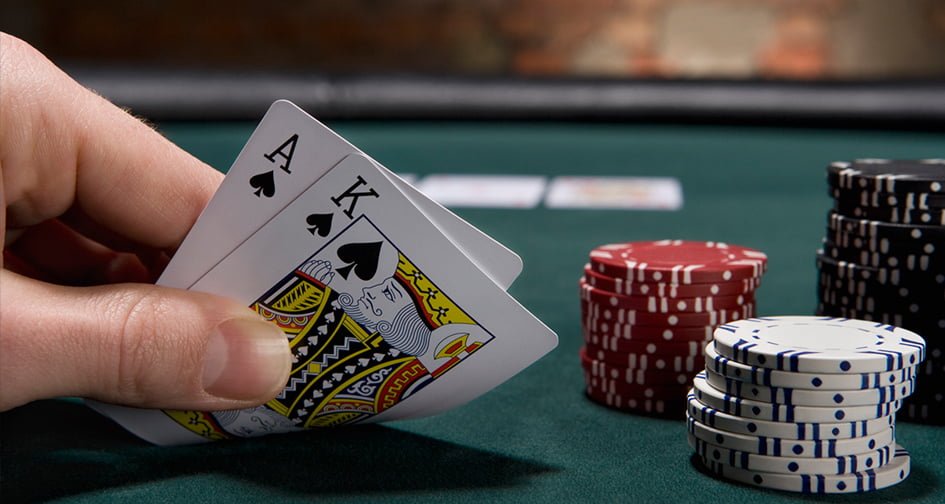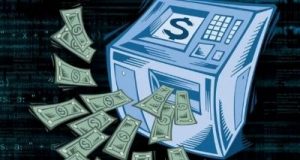Blackjack is an American ‘banking’ game known as Twenty-One which is a card game that closely related with gambling. It is considered the blueprint on which games such as Blackjack and Pontoon were invented. The origin of Blackjack dates back to the United States of America in the early 19th century. The game gained it’s popularity thanks to the legalization of gambling in the country. Although it is often said that Blackjack originated from the Roman Empire but there is no concrete proof that supports that.

Based on historical evidence, it was said that the French Colonists took Twenty-one to the people of North America who initially did not fancy the style of play resulting in losses for the gambling houses as it was a challenge to have interested players. Then an idea came about – In a bid to stimulate players’ interests, gambling houses introduced bonus payouts, a ten-to-one payout if the player’s hand consisted of the ace of spades and a Blackjack. This hand was termed a Blackjack. In modern times, the ten-to-one payout has been cancelled but this seemingly perfect name still sticks. An updated definition of a Blackjack is any hand that contains an ace and a ten or face card regardless of suits or colors.
The Americans, known for their efforts of personalizing whatever they seem worthy enough, changed the rule that disallows players to see the dealer’s cards as it was in the original Blackjack.

CONTRIBUTIONS TO THE DEVELOPMENT OF THE GAME
Since then, a lot of contributions have been made to the game which includes some scientific contributions. In 1956, Roger Baldwin, Wilbert Cantey, Herbert Maisel, and James McDermott devised a strategy that can be used to play Blackjack and increases the chances of a win. They published a paper in the Journal of the American Statistical Association titled The Optimum Strategy in Blackjack but as fate would have it, their publication didn’t appeal to the majority of Gamblers. Another Blackjack researcher, Edward O. Thorp used the IBM 704 to find ways of winning in Blackjack with his research based on Baldwin’s hand calculations and Kelly Criterion. In 1963, Edward published a book which mainly talked about the advantage the house had by winning the game through the counting of cards named “Beat the Dealer”.
Unlike The Optimum Strategy, Beat the Dealer was generally accepted by Gamblers. He devised the ten-count strategy, a strategy that starts with a player recording two numbers – 16 and 36. These numbers represent tens in the deck and other cards of other players in the deck respectively. The strategy continues that as the cards come out, backward counting begins. Then, you divide the count of others that remain by the count of tens to get what is called the Thorp Ratio. Thorp Ratio indicates a player’s advantage and the time he needs to raise a bet but this strategy came with it a flaw. The flaw is that it applies to only single-deck only games. If you try it with the eight-deck game, you practically end up teaching other players mathematics.
When the Ten-count strategy became a widely used strategy, the casinos were furious at the rate at which players were gaining money causing them to alter the rules. They limited single-deck games to two and four-deck games making Thorp’s strategy less effective. The casinos also did enlargement of their parlors to accommodate more blackjack lovers.
When the Ten-count strategy didn’t seem to suit Gamblers, they hoped for a miracle which did come, through a computer scientist by the name Harvey Dubner. He invented another counting strategy which he called Hi-Lo Count. Here, a player assigns a value of either -1, 0, or +1 to each card in a desk. In the end, the total value of a 52 card deck is zero. This easy-to-understand strategy is mostly used by those who play the game as a hobby or during a vacation or for a tutorial with a beginner. It is also called the Minus/Plus strategy or the Balanced strategy.
With the Hi-Lo Count and Ten-count strategy in town, the casinos were not happy. The same people kept winning and they didn’t like that so they employed the service of a private detective, Robert Griffin. What he did was he observed the gamblers that count cards and took their pictures. He compiled these pictures with the information of the respective person. He sold the books to casinos so that they could chase away or limit the playing time of the card counters.
In 1975, an economics doctor, Stanford Wong invented his strategy; Wong or “Wonging”. As a result of this incredible strategy, Stanford earned a spot in the Blackjack Hall of Fame. This involves table-hopping and back-counting. A player can watch the play of cards in a game without staking his money. When the player sees he has an advantage move, he can then scale in. When the total points value is in the player’s favor, he will then step out. That was a nice strategy. Some casinos considered it cheating as it was clearly bad for business, so they always put “No Mid-shoe Entry” signs in their casinos.
In May 1978, Resorts Casino Hotel became the first legal casino outside of Nevada. This eased the difficulties faced by Gamblers that had to travel all the way to Nevada to play blackjack. In 1987, the US Congress passed the Indian Gaming Regulatory Act. This act gave other tribes the right to build and regulate their casinos. This led to an increase in the popularity of the game and indirectly to the creation of state gaming agencies though they regulated the number of open casinos.
Today, Blackjack is not only played in the US, but in many other countries including Macau, South Korea, Philippines, New Zealand, London, Germany, France, South Africa and other parts of the world. With the introduction of online Blackjack, it can be played anywhere with the only requirement for legal players being internet access. Mind you, online Blackjack is harmless as the possibility of a physical fight breaking out is greatly reduced. In online blackjack, card counting is virtually impossible. As harmless as the game so is the boredom. At the inception of online blackjack, players couldn’t see one another nor the dealer which didn’t satisfy players. Live videos were blur and with poor sound quality until a breakthrough in 2006 with the advent of built studios. The built studios were able to produce high definition video quality and excellent sound allowing for players to interact with a dealer traditionally.

Now, Blackjack has become a day-to-day game for Gamblers. We have people that have been inducted to the Hall of Fame due to their outstanding contribution to its development. We have also seen the likes of The Man Who Broke Atlantic City, Don Johnson who won over $15 million within six months. Blackjack is more than just a game, it is a part of our History.



